|
About Your Spine |
Your nervous system is a highly complex system that controls and coordinates every function of your body. Your spinal cord acts as the main line of intelligence for your entire body, allowing thoughts and impulses to travel down the spinal column and exit via nerves at various levels of your spine. In order to maintain optimal health, it is essential that your nervous system be free from any obstructions caused by spinal displacements, or subluxations. Subluxations are the cause of many unwanted health conditions.
Subluxations can interfere with the normal function of your nervous system. At any point along the spine, a subluxation can have an enormous effect on the efficiency of how your thoughts and impulses exit the nerves. Take a look at the pictures below to see exactly which area of your spine affects the functions and organs in your body. |
| |
| Area |
Nerve Supply |
| Upper Cervical Spine Upper Neck, C1 - C2 |
 The Upper Cervical Spine consists of two bones, the Atlas (C1), and the Axis (C2), which are located at the top of your neck. Because this area is so close to your brain, is the most flexible area of your spine, and because so many of your body's nervous system messages pass through the area, subluxations are quite common here. This means that very large areas of the body are supplied by the nerve impulses that pass The Upper Cervical Spine consists of two bones, the Atlas (C1), and the Axis (C2), which are located at the top of your neck. Because this area is so close to your brain, is the most flexible area of your spine, and because so many of your body's nervous system messages pass through the area, subluxations are quite common here. This means that very large areas of the body are supplied by the nerve impulses that pass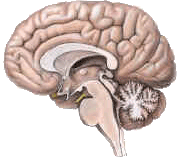 through or near the upper cervical spine. Some of the areas that can be affected by subluxations in this area include your brain, head and face. This can result in headaches, facial palsy, sinus trouble, allergies, fatigue, cross-eyes, or dizziness. through or near the upper cervical spine. Some of the areas that can be affected by subluxations in this area include your brain, head and face. This can result in headaches, facial palsy, sinus trouble, allergies, fatigue, cross-eyes, or dizziness.
Your vagus nerves also pass through the Upper Cervical Spine. These nerves control many functions such as swallowing, and your vocal cords, and major organs like your heart, lungs, esophagus, stomach, gallbladder, and small intestines. A subluxation affecting the vagus nerve can have a very wide and profound impact on the function and health of a large portion of your body.
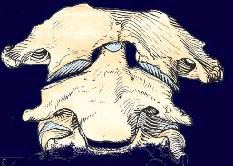 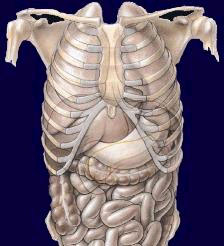
|
- Head
- Face
- Upper neck
- Inner ear
- Middle ear
- Sympathetic nerve system
- Sinuses
- Eyes
- Auditory nerves
- and more
|
| |
| Cervical Spine, Mid and Lower Neck, C3 - C7 |
The Cervical Spine consists of seven vertebrae: the third cervical (C3), through the seventh cervical (C7), vertebrae. A subluxation in this are of your spine can affect your neck and shoulder muscles, arms and hands. This can cause problems such as neck pain, arm pain, numbness, stiff neck, bursitis, and other musculoskeletal problems.
This area of the spine also stimulates the nerves responsible for the function of your sinuses, nose, thyroid gland, lymph nodes, diaphragm, and other organs and systems.
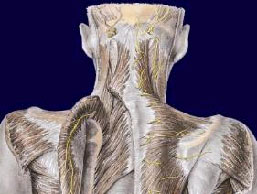 
|
- Neck
- Shoulders
- Thyroid
- Tonsils
- Teeth
- Outer ear
- Nose
- Mouth
- Vocal cords
- and more
|
| |
| Thoracic Spine, Mid Back, T1 - T12 |
The 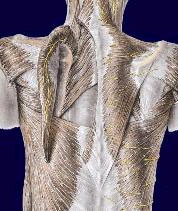 Thoracic Spine, commonly referred to as your middle back, consists of 12 vertebrae, (T1 - T12). Since this is the longest portion of your back, many different surface tissues and internal organs are affected by a subluxation here. This includes the parts of your arms from the elbows down, your hands, and your fingers. The Thoracic Spine also controls the muscles of the middle back, chest, and rib cage. Thoracic Spine, commonly referred to as your middle back, consists of 12 vertebrae, (T1 - T12). Since this is the longest portion of your back, many different surface tissues and internal organs are affected by a subluxation here. This includes the parts of your arms from the elbows down, your hands, and your fingers. The Thoracic Spine also controls the muscles of the middle back, chest, and rib cage.
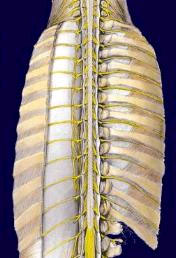
The internal organs affected by the Thoracic Spine include many of the organs in the chest and abdomen such as your heart, lungs, bronchial tubes, gallbladder, liver, stomach, pancreas, spleen, adrenal glands, kidneys, and small intestines. A subluxation to the Thoracic Spine can lead to such problems as asthma, certain heart problems, bronchitis, blood pressure problems, ulcers, allergies, kidney trouble, and digestive problems, to name only a few. Most subluxations in this area go undetected for a long time before a health problem is ever noticed. subluxation to the Thoracic Spine can lead to such problems as asthma, certain heart problems, bronchitis, blood pressure problems, ulcers, allergies, kidney trouble, and digestive problems, to name only a few. Most subluxations in this area go undetected for a long time before a health problem is ever noticed.
|
- Arms
- Hands
- Heart
- Coronary arteries
- Esophagus
- Trachea
- Lungs
- Bronchial tubes
- Gallbladder
- Liver
- Stomach
- Pancreas
- Spleen
- Kidneys
- Uterus
- Adrenal glands
- Small intestines
- and more
|
| |
| Lumbar Spine, Lower Back, L1 - L5 |
The Lumbar Spine is the part of your spine commonly referred to as your lower back. It consists of five large verte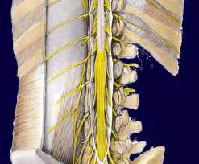 brae, (L1 - L5). The nerves in the Lumbar Spine control some of the largest muscles in your body. These muscles include both the large and small muscles of the lower back, and the muscles for your thighs, calves, and feet. Subluxations in these areas can cause pain or numbness in the lower back, legs, or sciatic pain. If left untreated, muscle spasm, weakness, and joint problems can result. brae, (L1 - L5). The nerves in the Lumbar Spine control some of the largest muscles in your body. These muscles include both the large and small muscles of the lower back, and the muscles for your thighs, calves, and feet. Subluxations in these areas can cause pain or numbness in the lower back, legs, or sciatic pain. If left untreated, muscle spasm, weakness, and joint problems can result.
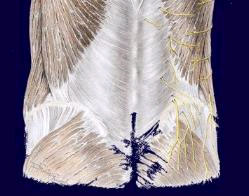
Some of the many organs and tissues that get their impulses from the Lumbar Spine include the large intestines, appendix, male or female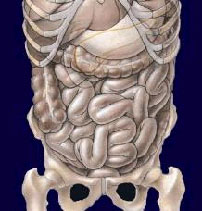 reproductive organs, bladder, prostate gland, and others. If these organs are affected, you could experience constipation, diarrhea, cramps, varicose veins, bladder problems, menstrual problems, infertility, bed wetting, difficulty with urination, and poor circulation. reproductive organs, bladder, prostate gland, and others. If these organs are affected, you could experience constipation, diarrhea, cramps, varicose veins, bladder problems, menstrual problems, infertility, bed wetting, difficulty with urination, and poor circulation.
|
- Large intestines
- Appendix
- Abdomen
- Bladder
- Reproductive organs
- Lower back
- Lower extremities
- Ankles
- Feet
- and more
|
| |
| Sacrum and Coccyx, Basebone or Tailbone |
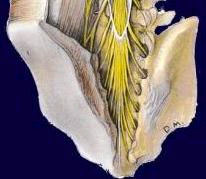 The sacrum and coccyx are commonly referred to as your base bone, or tail bone. When you are a child, the sacrum consists of five individual bones, and the coccyx consists of three to five bones. As you mature, the sacral segments and the coccygeal segments fuse, so each of these two bones are solid singular bones. The sacrum and coccyx are commonly referred to as your base bone, or tail bone. When you are a child, the sacrum consists of five individual bones, and the coccyx consists of three to five bones. As you mature, the sacral segments and the coccygeal segments fuse, so each of these two bones are solid singular bones. 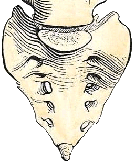 The sacrum forms joints with each of the hip bones and helps to stabilize the pelvis. The sacrum forms joints with each of the hip bones and helps to stabilize the pelvis.
Muscles affected by the sacrum and coccyx include the muscles of the buttocks and hips, and portions of the thigh and leg.
Organs and tissues that can be affected by a subluxation here are the rectum, and portions of pelvic tissues are also 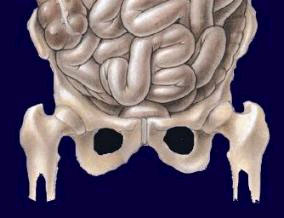 innervated by these nerves. Left untreated, sacroiliac conditions, hemorrhoids, scoliosis, and pain when sitting can occur. innervated by these nerves. Left untreated, sacroiliac conditions, hemorrhoids, scoliosis, and pain when sitting can occur.
|
- Hip bones
- Tail bone
- Buttocks
- Rectum
- Anus
- and more
| |



